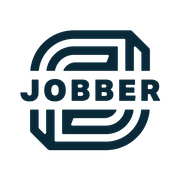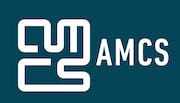Looking for the best route planning software? Our buyer's guide has got you covered! Make an informed choice and streamline your operations with ease!
When it comes to managing a fleet of vehicles, route planning can be time-consuming and overwhelming. But with the help of a route planning software, businesses can streamline their operations, reduce fuel costs, and ultimately increase efficiency. A good route planning solution should be intuitive, user-friendly, and powerful enough to provide accurate and reliable data. With a wide range of options available on the market, it can be challenging to choose the right one for your business needs. That's why we've created this buyer's guide to help you navigate through the sea of options and find the best application for your company. In this guide, we'll provide you with essential information about the key features to consider when researching route planning technology, as well as how to identify the top options available on the market today.
What is route planning software?
This is a technology that helps professionals, especially those in industries such as field sales, delivery, and fleet management, optimize their routes efficiently. It jogs multi-layered data points simultaneously to identify and deliver the most efficient driving route by taking factors such as traffic, distance, and speed into account. It can access real-time traffic updates, adjust schedules, and offer route optimization to minimize transit times, cut costs while providing better customer service. In fact, a report says that 53% of all shipping costs fall within the last mile. Route planning can curb these high shipping costs.
Common use cases for a route planning program include:
- Field sales.
- Delivery services.
- Logistics and trucking, and road trips.
Some of the most frequently used tools are:
- Badger Maps.
- OptimoRoute.
- BatchGeo.
- RouteXL.
- Speedy Route, as well as Google Maps.
Badger Maps has features specifically designed for field sales such as visualizing and planning days, optimization of routes, accessing CRM data in the field, and managing territories.
Companies that primarily use this route tool include e-commerce companies, restaurants, grocery stores, courier and postal delivery services, home delivery services, trucking and logistics companies, and taxi and ride-hailing companies. Essentially, businesses that require transportation of goods, people, and services can benefit from route planning software.
Route planning isn't a one-size-fits-all solution as it comes in different forms like single-destination, multiple stops, and multiple stops with specific time constraints. The latter requires purpose-made route planning software to handle such inputs, while free options like Google Maps and MapQuest are limited in this regard. With the proper planning and access to the right tools, route planning can be quick and effortless, leading to efficient and economical delivery or field service calls. Companies that use it stand to optimize their operations, streamline productivity, while also improving cost-efficiency all in one.
What are the benefits of adopting a route planning system?
Effective route planning is an essential element of any business that involves transportation of goods or services. Whether you are managing a small-scale delivery operation or running a large logistics company, a route planning application can make all the difference in terms of optimizing delivery performance, reducing costs, and increasing customer satisfaction. Here are its main benefits:
- Cost savings: This tool uses algorithms to optimize routes for maximum efficiency, reducing fuel consumption and cutting down on driver hours, which leads to significant cost savings. According to a research, route optimization can significantly lower fuel costs by 20%.
- Improved customer service: With quick and accurate deliveries, businesses can improve customer service by providing customers with more accurate delivery times and faster delivery of their goods or services.
- Enhanced productivity: A route planning program can streamline your operations, reduce manual input, and take care of mundane tasks like allocating services, freeing up time for your workforce to focus on other important aspects of the business.
- Real-time updates: It comes with GPS tracking, enabling managers to track deliveries in real-time and make necessary changes to optimize routes and avoid delays.
- Improved driver safety & compliance: A route system helps identify potential safety hazards, track driver behavior, and ensure compliance with regulations, ultimately leading to safer and more efficient operations.
10 key features of a route planning solution
The powerful tool provides users with a range of features that enable efficient and effective route planning, leading to cost savings, faster delivery times, and improved customer satisfaction.
Here are its 10 common features:
1. Multi-stop route planning:
One of the core features of route optimization software is the ability to plan multi-stop routes based on various parameters such as delivery time windows, distance, and traffic.
2. Real-time traffic monitoring:
Many route planning tools use real-time traffic data to update routes in real-time, based on current conditions.
3. Map integration:
It often integrates with maps, providing users with visual aids that assist in route creation and verification.
4. Multiple vehicle support:
Ideal for businesses with larger fleets, it is able to support multiple vehicles, allocating tasks based on the type of vehicle and route.
5. Route optimization:
Route optimization features use algorithms that calculate the most fuel-efficient, cost-effective, and time-saving routes to complete tasks.
6. GPS tracking:
GPS tracking function assists in monitoring the location of delivery vehicles and provides route optimization data for future planning.
7. Delivery status notifications:
Many route tools offer real-time delivery status updates and notifications to minimize missed deliveries.
8. Historical route reporting:
This solution can provide detailed reports on previous routes, helping businesses identify areas for optimization and cost-saving.
9. Mobile accessibility:
Being mobile-friendly is a crucial aspect that is limited to route planning technology, which enables users to plan and update routes on-the-go.
10. Customizable settings:
Customizable settings allow businesses to adjust route planning software to their specific needs, enabling them to optimize routing strategies and provide better customer service.
What to consider when investing in a route planning tool
Here are some factors that you should consider when purchasing this solution:
- Scalability: One of the first things to consider is its scalability. Ensure that it can handle your current fleet size and any potential growth in the future. You don't want to invest in software that you'll quickly outgrow.
- User-friendliness: Another critical factor to consider is the user-friendliness of the system. You need one that your employees can quickly learn how to use, and that integrates well with other systems you use.
- Customization: Look for a platform that allows you to customize routes according to your specific needs. Make sure it can incorporate constraints such as driver work hours, vehicle capacity, and traffic patterns.
- Data analytics: The right route planning application should also be able to provide you with valuable data analytics that can help you improve your routing and make more informed business decisions.
- Real-time updates: Your route planning platform should be able to provide real-time updates on driver status and traffic conditions. This feature ensures that you are always aware of any potential delays or issues that may impact your delivery times.
- Cost-effectiveness: It is also essential to consider the cost of the program and whether it is cost-effective for your business. You need to ensure that its benefits outweigh the costs of purchasing and implementing it.
When it comes to purchasing route planning software, it's important to consider the factors mentioned above. Investing in the right one can provide significant benefits for your business, including increased productivity, better customer satisfaction, and reduced costs. Take the time to research and evaluate your options to make the best decision for your organization.
Market trends for route planning software
The route planning software industry is constantly evolving, and 2024 and beyond are set to witness some significant trends. Here are some of the most significant ones to keep an eye on:
#1. Increased use of machine learning:
With the help of machine learning, route planning software can now generate the most effective routes for drivers, taking into account traffic, weather, and other factors that influence delivery times.
#2. Cloud-based solutions:
A route planning app that utilizes the cloud is becoming more common among logistics companies. This allows for better collaboration, more accurate data, and greater flexibility for businesses.
#3. Improved user interfaces:
Providers of this solution are now focusing on delivering more user-friendly interfaces with features like rich media, drag & drop, and detailed data visualization. This improves user experience and simplifies operations with more efficiency.
#4. Integration with other systems:
For route planning tool to be effective, it needs to be integrated into other systems like delivery tracking, and vehicle monitoring. With growing technology, this integration would be possible.
#5. Mobile optimization:
With a workforce that increasingly relies on mobile devices, expect route planning apps to become more mobile-friendly than ever before. This will allow drivers and dispatchers to access and manage their fleets on the go quite efficiently.
Conclusion
In a nutshell, effective route planning is key for the success of many business operations, and this is where route planning software comes in to cut out the busy work and simplify processes. By leveraging features outlined in this guide and with continuous advancements and emerging trends, businesses will be better equipped with the best possible solutions for logistics management. Route planning software has revolutionized the way individuals and businesses approach travel and logistics. The future of this technology is very promising. Embrace it, and let it guide you toward smarter, more efficient travel and transportation solutions.








